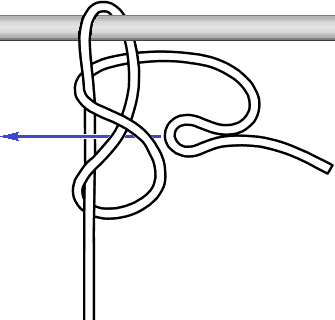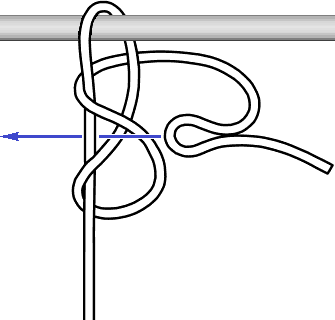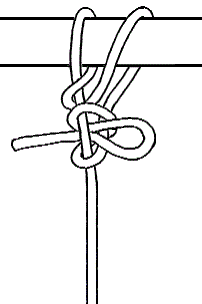| HOME | Slipped Buntline Hitch |
 |
The Slipped Buntline Hitch and especially the variant shown below are among the more secure hitches available and are unaffected by the cross-sectional shape of the hitching object. Use the Slipped Buntline where you need to hitch to a very large object where some other quick-release hitches would prove unwieldy. The Slipped Buntline is superior to the Mooring Hitch, which is prone to capsize into a jammed form.
Under most circumstances, this hitch can be released when loaded, but if you're using larger, higher-friction rope under extreme loads, you can reduce the force on the knotted part to make it easy to release when loaded by first wrapping the rope one turn around the standing part of the rope in the place where you would have tied the knot (do not tuck this turn). Then, wrap the rope back around the object again and proceed to tie the hitch as you would have ordinarily, as shown below, right.
| A Variant of the Slipped Buntline | Load Releasing Configuration of the Slipped Buntline | |
 |  |
If there is a possibility that something might accidentally snag the release line, a Gnat Hitch may be a more appropriate choice unless the load needs to be released while loaded. In such a case, the free end may be tucked into the draw loop before shrinking the draw loop down around the free end to prevent accidental release.
Related page: Gnat Hitch, Trigger Bend